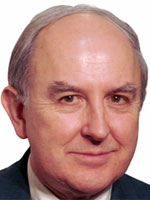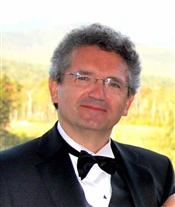Program Information
Anne and Donald Herbert Distinguished Lectureship On Modern Statistical Modeling
C Marshall1*, A Niemierko2*, (1) NYU, New York, NY, (2) MGH, Department of Radiation Oncology, Wayland, MA
Presentations
7:30 AM : Memorial Introduction - C Marshall, Presenting Author7:35 AM : Modern Statistical Modeling - A Niemierko, Presenting Author
WE-A-201-0 (Wednesday, August 3, 2016) 7:30 AM - 8:30 AM Room: 201
Chris Marshall: Memorial Introduction
Donald Edmonds Herbert Jr., or Don to his colleagues and friends, exemplified the “big tent” vision of medical physics, specializing in Applied Statistics and Dynamical Systems theory. He saw, more clearly than most, that “Making models is the difference between doing science and just fooling around [ref Woodworth, 2004]”.
Don developed an interest in chemistry at school by “reading a book” - a recurring theme in his story. He was awarded a Westinghouse Science scholarship and attended the Carnegie Institute of Technology (later Carnegie Mellon University) where his interest turned to physics and led to a BS in Physics after transfer to Northwestern University. After (voluntary) service in the Navy he earned his MS in Physics from the University of Oklahoma, which led him to Johns Hopkins University in Baltimore to pursue a PhD. The early death of his wife led him to take a salaried position in the Physics Department of Colorado College in Colorado Springs so as to better care for their young daughter. There, a chance invitation from Dr. Juan del Regato to teach physics to residents at the Penrose Cancer Hospital introduced him to Medical Physics, and he decided to enter the field. He received his PhD from the University of London (UK) under Prof. Joseph Rotblat, where I first met him, and where he taught himself statistics. He returned to Penrose as a clinical medical physicist, also largely self-taught. In 1975 he formalized an evolving interest in statistical analysis as Professor of Radiology and Head of the Division of Physics and Statistics at the College of Medicine of the University of South Alabama in Mobile, AL where he remained for the rest of his career. He also served as the first Director of their Bio-Statistics and Epidemiology Core Unit working in part on a sickle-cell disease. After retirement he remained active as Professor Emeritus.
Don served for several years as a consultant to the Nuclear Regulatory Commission and may be remembered for his critique of the National Academy of Sciences BEIR III report (stating that their methodology “imposes a Delphic quality to the .. risk estimates”.) This led to his appointment as a member of the BEIR V committee. Don presented refresher courses at the AAPM, ASTRO and RSNA meetings and was active in the AAPM as a member or chair of several committees. He was the principal author of AAPM Report 43, which is essentially a critique of established clinical studies prior to 1992. He was co-editor of the Proceedings of many symposia on Time, Dose and Fractionation held in Madison, Wisconsin. He received the AAPM lifetime Achievement award in 2004.
Don’s second wife of 46 years, Ann, predeceased him and he is survived by daughters Hillary and Emily, son John and two grandsons. Don was a true gentleman with a unique and erudite writing style illuminated by pithy quotations. If he had a fault it was, perhaps, that he did not realize how much smarter he was than the rest of us.
This presentation draws heavily on a biography and video interview in the History and Heritage section of the AAPM website. The quote is his own.
Andrzej Niemierko:
Statistical modeling plays an essential role in modern medicine for quantitative evaluation of the effect of treatment. This session will feature an overview of statistical modeling techniques used for analyzing the many types of research data and an exploration of recent advances in new statistical modeling methodologies.
Learning Objectives:
1. To learn basics of statistical modeling methodology.
2. To discuss statistical models that are frequently used in radiation oncology
3. To discuss advanced modern statistical modeling methods and applications.
Contact Email:




